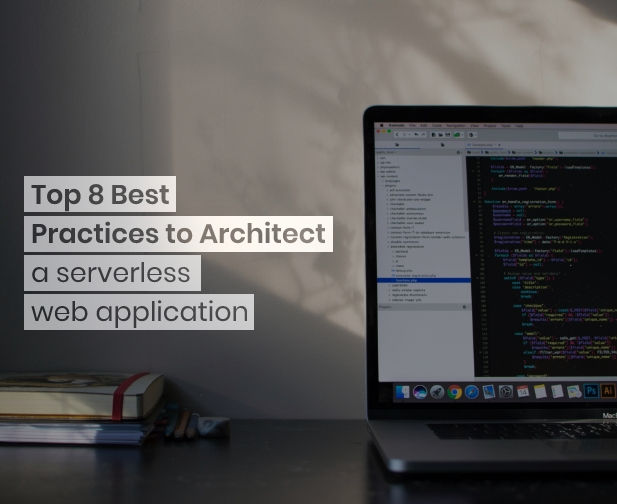Serverless computing has been gaining momentum ever since it came into limelight in 2015. It’s a native architecture of the cloud which enables users to create, deploy and run an application without thinking of its server. Serverless, in fact, allows users and developers to shift more the operational capacity, increase agility and innovation.

In short, you get limitless computational power with no infrastructure management tasks such as zero maintenance, cluster provisioning, capacity provisioning, etc.
Why Serverless
Serverless is the need of time. As technology advances, you need to come up with more enhanced web applications with more power and agility which may not be possible traditionally. And, even if it is possible, you need to spend a lot of effort such as building perfect infrastructure, human resources, time and cost. Serverless helps you remain focused on your core products while leaving all other responsibilities upon the serverless provider. All you need a serverless web application and you pay no heed towards its maintenance, scaling up, agility or anything else. You have immense benefits from having a serverless application.
So, in this article, we shall be discussing the best practices of a serverless web application that every Serverless Architect should know.
Even though there are plenty of tech giants offering serverless services including AWS Lambda, Microsoft Azure, and Alphabet’s Google Cloud Platform, but we have taken the example of AWS to make it more comprehensive. So, here we go:
1. The Serverless Function Requires VPC-Enable for Better Security
We have taken an example of Lambda as most of us use AWS Lambdas as an event-driven, serverless computing platform. So, it is important to have VPC-enable functions of Lambda operate from VPC which is owned by AWS. Enabling this, you get complete ability to have your function make a network request to any address.
Lambda is not directly accessible to the public, but with the support of AWS APIs Getaway, we can make accessible for the public. So, be it accessing AWS APIs or interacting with AWS DynamoDB APIs, you can easily do it after enabling the function for VPC access. So, having have your function VPC-enabled, the Subnet will manage all your traffic using its routing rules.
2. Creating Event-Driven Architectures
When it comes to creating event-driven architectures, it is important to know the mechanisms and how to enable asynchronous messaging pattern. It applies in both creating a simple queuing and message buffering and choreography pattern that is more intricate even-based. To enable this, you need to use queues or streams.
Queuing is also used for intrapersonal communication. That means when you want to initiate communication between one Lambda function another, then Queuing can be the best for you.
3. How to Implement and Orchestrate in a Distributed, Microservices Environment
You need to implement coordinated transactions using coordinated sequenced invocations across services in distributed architectures. The implementation also allows rollback and retry mechanisms put in place. That is quite different from the traditional database-based ACID transactions.
When you need significant orchestration logic and looking to utilize more of the orchestrator pattern, not the choreography pattern, then the serverless technology lie AWS Step Functions enables you to create highly qualified and complex workflows with its various AWS services that also includes AWS Lambda.
4. Understanding AWS Lambda Computing Environment
It is important to understand AWS Lambda and programming model. You need to learn how to utilize Lambda in terms of performance and cost optimization. You learn this using the tutorial provided for AWS Lambda as “Lambda Under the Hood”, “Lambda Layers, the Runtime API, and Nested Applications” and “Optimizing Serverless Applications”.
5. Serverless Deployment Automation
When it comes to a larger number of microservices and smaller components, integrating automation and code management into your application is critical. Given the fact that early integration will efficiently create, deploy and implement the serverless architectures. Importantly, when you use AWS, you get a wide range of first-party deployment tools and frameworks to properly architect your serverless web application. The tools and frameworks you can utilize from AWS include the AWS Serverless Application Model (SAM), the AWS Cloud Development Kit (CDK), AWS Amplify, and AWS Chalice.
Besides, there are various third-party tools and frameworks available to make the deployment of serverless web application easy, they include, Serverless Framework, Claudia.js, Sparta, or Zappa. You are free to create your custom-built framework, though you need to ensure that things such as automation strategy works as per use case, team and workflows.
6. Identity Management, Authentication, and Authorization
When it comes to creating a serverless web application, a developer requires planning things such as integrating identity management, building enhanced authorization and authentication functionalities in advance. The utilization of Amazon Cognito enables a developer to deploy these things directly into the serverless web applications. At the same time, when using Amazon API Gateway, the developers can manage things like authorization logic and permit requests straightforwardly. That means you manage the authorization logic at the gateway layer which protects your native authorization being exposed.
7. Learning End-to-End Security Techniques
Apart from knowing identity management, authorization and authentication, there are some more important security measures you can learn to create a highly secure serverless web application. Here are some of the top list of things you can consider:
Concerns regarding regulatory compliance
Ways to validate input and request
Metering & Throttling Access to tracking bandwidth and accessing use control based on rules
Securing storage and retrieving data as needed
IAM execution roles and implementing invocation policies
And, others
You can learn all these things from the AWS tutorial page while creating the application.
8. Considering Packages Size and Dependencies
You must take care of package size as having a larger deployment package will slow down the function of the application. Therefore, you are advised to remove all the unnecessary items including documentation and libraries. You can use AWS SDK which enables Java function users to bundle the modules which needed from the SDK.
Let’s take a look at the example of how using Java Function with AWS SDK create an excellent package:
<dependency>
<groupId>software.amazon.awssdk</groupId>
<artifactId>dynamodb</artifactId>
<version>2.6.0</version>
</dependency>
Here, only the required modules have been used
In case, you are not using Java Function with AWS SDK, you end up creating a larger package with the entire SDK with lots of unnecessary modules. Here’s how it happens:
<dependency>
<groupId>software.amazon.awssdk</groupId>
<artifactId>aws-sdk-java</artifactId>
<version>2.6.0</version>
</dependency>
Final Thoughts
When it comes to creating a serverless web application, you have plenty of things to learn. Serverless technology is the need of time as people need more services, support and assistance from technology at the minimum costs. Serverless is the way to cut costs significantly and reward the business with limitless scaling options. Stay tuned for more such information.
To know more about iView Labs, kindly log on to our website www.iviewlabs.com and to get in touch with us with your queries and needs just write us an email on info@iviewlabs.com and sales@iviewlabs.com. Download the latest portfolio to see our work.

